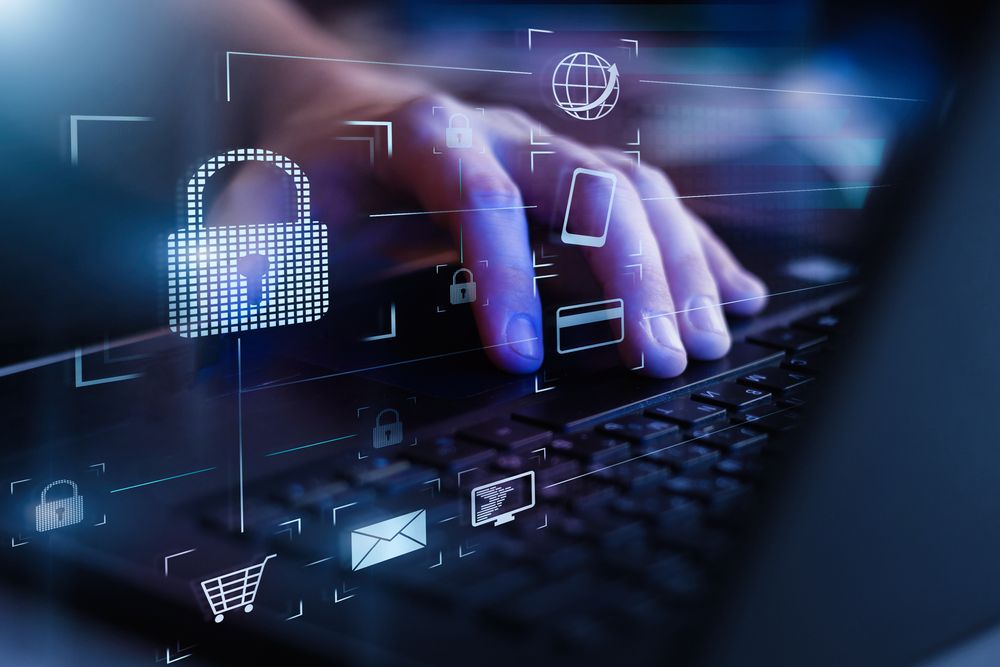
In the age of digital transformation, the banking sector has been a prime target for cybercriminals due to the sensitive nature of the data and the financial incentives at stake. As a result, banks and financial institutions have been at the forefront of adopting cutting-edge security measures to safeguard their customers’ assets. The evolution of banking security is a testament to the industry’s resilience and commitment to trust, ensuring that your money is protected against an ever-changing threat landscape.
The Dawn of Digital Banking and Initial Security Measures
The shift from traditional to digital banking marked a significant turning point in how financial services were delivered and consumed. With the advent of online banking in the late 1990s, customers embraced the convenience of managing their finances from the comfort of their own homes. However, this newfound convenience also opened up new vulnerabilities; cybercriminals quickly began exploiting these channels to commit fraud and theft.
To counter these threats, banks introduced several security layers. Passwords and PINs became the first line of defense, followed by security questions to verify a user’s identity. While effective at the time, these measures proved to be susceptible to social engineering and brute-force attacks.
Encryption technologies such as Secure Sockets Layer (SSL) and Transport Layer Security (TLS) were also implemented to secure the communication between a customer’s browser and the bank’s servers. This ensured that sensitive information like account numbers and personal details were not intercepted by unauthorized parties.
The Rise of Multi-Factor Authentication (MFA)
As cyber threats evolved, so did the security measures to combat them. Multi-factor authentication (MFA) emerged as a robust solution to strengthen the authentication process. MFA requires users to provide two or more verification factors to gain access to their banking accounts, making unauthorized access significantly more challenging.
Typically, MFA combines something the user knows (like a password), something the user has (such as a one-time passcode sent to a mobile device), and something the user is (biometric data, for example). This layered security approach significantly reduces the risk of account compromise, even if one factor (like a password) becomes known to an attacker.
Banks also started using out-of-band authentication, which involves using a separate communication channel for verifying transactions. For instance, receiving a phone call or SMS to confirm a payment adds an extra barrier for fraudsters attempting to manipulate banking operations.
Biometric Security: A Personalized Fortress
Biometric technology has arguably been one of the most influential advancements in banking security. Fingerprints, facial recognition, voice identification, and iris scanning are increasingly used to authenticate users with a high degree of accuracy.
This personalized security measure is difficult to replicate or forge, which significantly enhances the safety of banking transactions. Biometric systems store data in an encrypted form, and sophisticated algorithms ensure that the biometric data is not directly exposed during the authentication process, thereby maintaining user privacy.
Banks have integrated biometric authentication into their mobile apps and ATMs, providing customers with a seamless and secure banking experience. This technology not only protects against unauthorized access but also streamlines the user experience by reducing the need for remembering multiple passwords and PINs.
Artificial Intelligence and Machine Learning: The Smart Guards
The application of artificial intelligence (AI) and machine learning (ML) in banking security represents a giant leap forward. These technologies enable banks to analyze vast amounts of transaction data to identify patterns and detect anomalies that could indicate fraudulent activity.
Machine learning algorithms continually adapt and improve, learning from new data to become more effective over time. They can spot suspicious transactions in real-time, such as unusually large transfers or payments to new recipients, and either block them or flag them for further investigation.
AI-driven chatbots and virtual assistants also contribute to security by providing users with instant support for any security concerns or incidents, while simultaneously reducing the workload on human customer service representatives.
In addition, AI and ML are used in cybersecurity to predict and prevent attacks. By analyzing past incidents and current trends, these systems can forecast potential threats and bolster defenses proactively, ensuring that banks remain one step ahead of cybercriminals.
Blockchain: The Immutable Ledger
Blockchain technology, popularized by cryptocurrencies, has offered a revolutionary approach to secure financial transactions. At its core, blockchain is a distributed ledger that records all transactions across a network of computers. The data on the blockchain is secured through cryptography, and each transaction is linked to the previous one, making it virtually impossible to alter the information retrospectively.
Banks are exploring blockchain for various applications, from cross-border payments to fraud prevention. The transparency and immutability of blockchain ledgers mean that any attempt at fraud is easily detectable and traceable. Smart contracts, which are self-executing contracts with the terms directly written into code, further automate and secure banking processes.
While the integration of blockchain into mainstream banking is still ongoing, it holds the promise of a more secure, efficient, and transparent financial system.
The evolution of banking security is a journey marked by constant adaptation and innovation. As the threat landscape morphs, banks continue to deploy advanced technologies to protect your money, ensuring that the trust between financial institutions and their customers remains unbroken. From the early days of simple passwords to the sophisticated use of AI and blockchain, banking security has become a formidable wall safeguarding our financial well-being. Rest assured, with each passing day, the technologies protecting your assets become more intelligent, more resilient, and more capable of fending off the threats of tomorrow.
